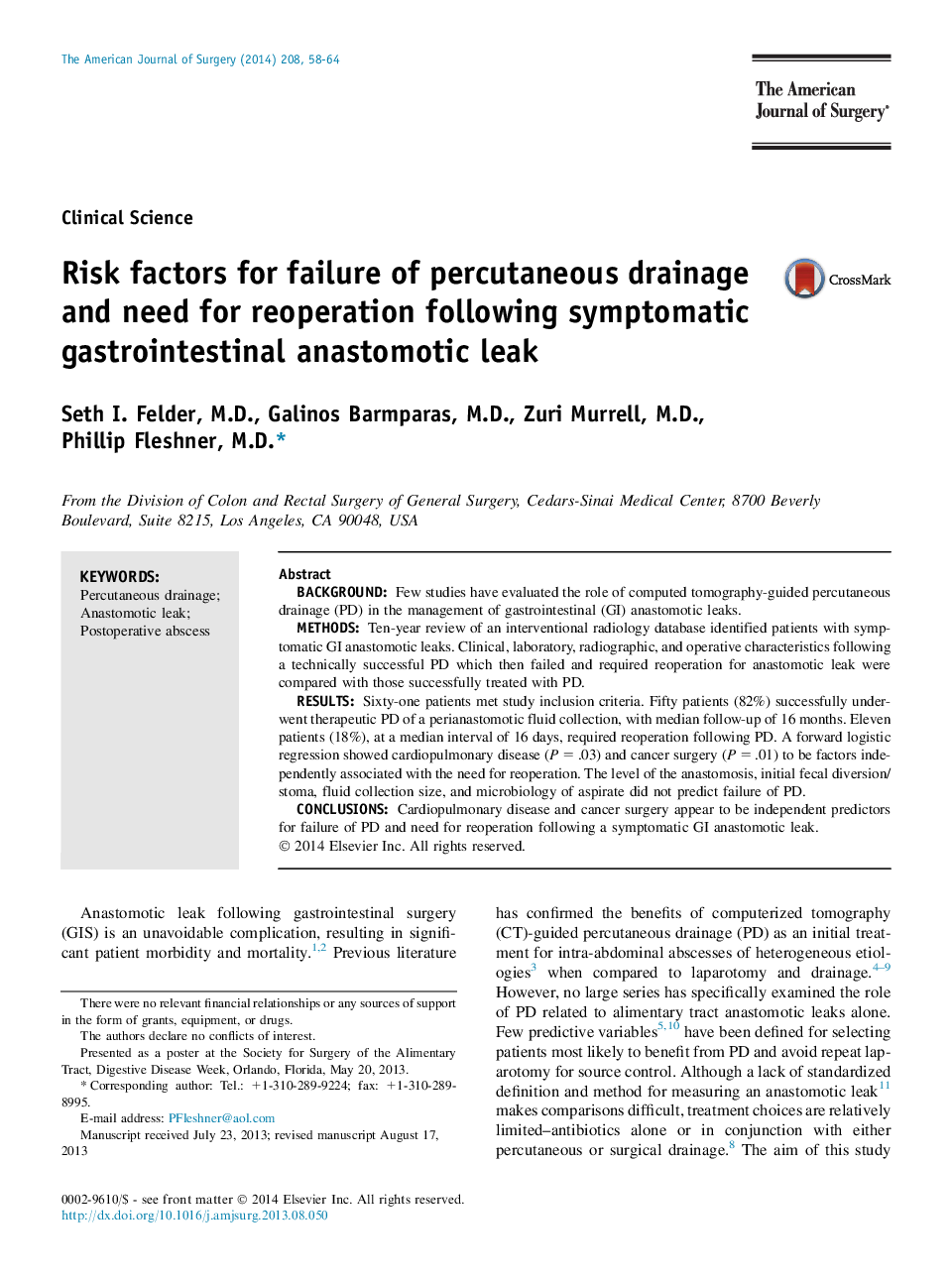| Article ID | Journal | Published Year | Pages | File Type |
|---|---|---|---|---|
| 4278666 | The American Journal of Surgery | 2014 | 7 Pages |
BackgroundFew studies have evaluated the role of computed tomography-guided percutaneous drainage (PD) in the management of gastrointestinal (GI) anastomotic leaks.MethodsTen-year review of an interventional radiology database identified patients with symptomatic GI anastomotic leaks. Clinical, laboratory, radiographic, and operative characteristics following a technically successful PD which then failed and required reoperation for anastomotic leak were compared with those successfully treated with PD.ResultsSixty-one patients met study inclusion criteria. Fifty patients (82%) successfully underwent therapeutic PD of a perianastomotic fluid collection, with median follow-up of 16 months. Eleven patients (18%), at a median interval of 16 days, required reoperation following PD. A forward logistic regression showed cardiopulmonary disease (P = .03) and cancer surgery (P = .01) to be factors independently associated with the need for reoperation. The level of the anastomosis, initial fecal diversion/stoma, fluid collection size, and microbiology of aspirate did not predict failure of PD.ConclusionsCardiopulmonary disease and cancer surgery appear to be independent predictors for failure of PD and need for reoperation following a symptomatic GI anastomotic leak.
